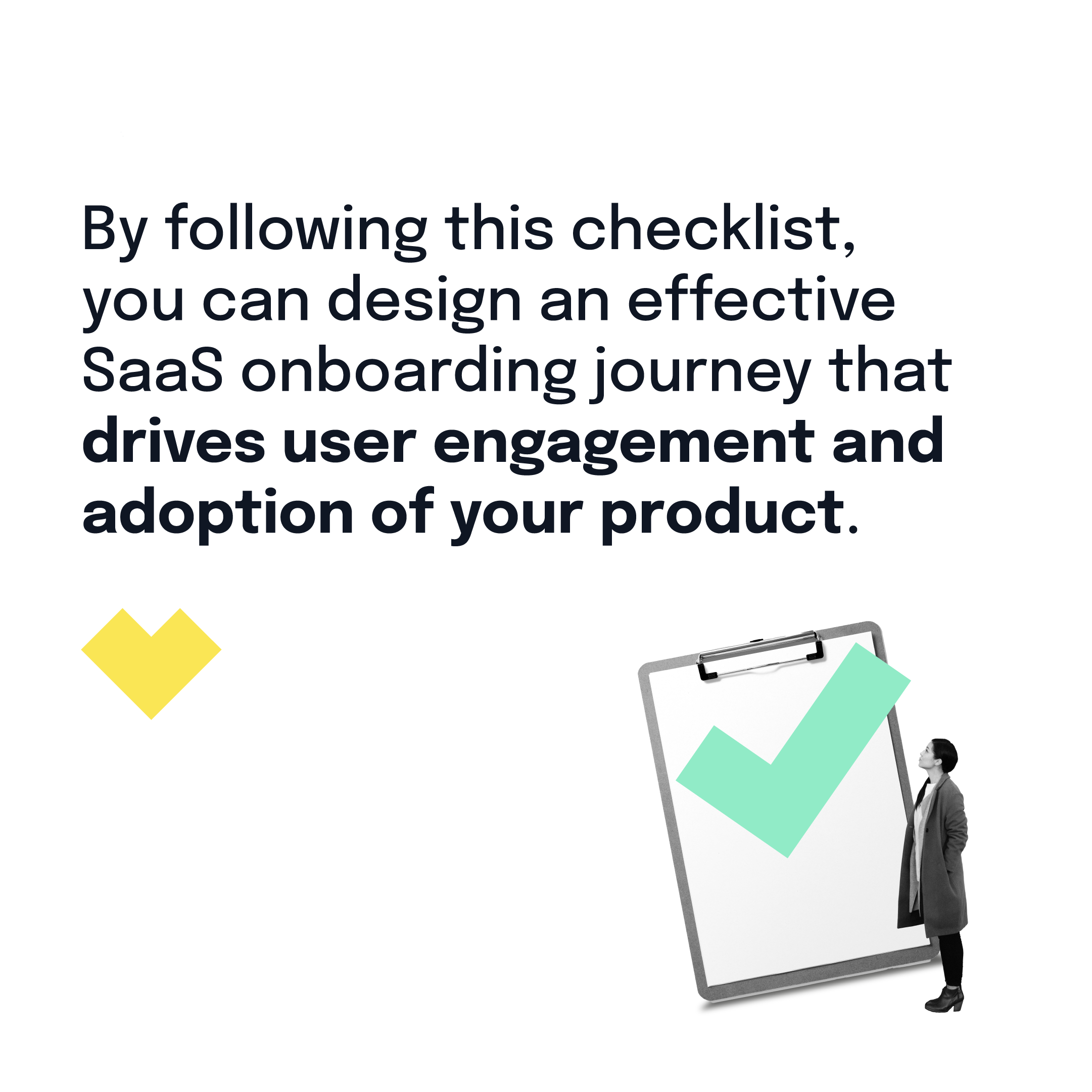
As the saying goes, “first impressions are everything,” and that couldn’t be more true when it comes to onboarding new customers to your B2B SaaS product.
The onboarding process sets the tone for the entire customer experience, and a smooth onboarding experience can mean the difference between a customer who’s engaged and loyal, and one who churns before ever fully utilizing your product. In today’s highly competitive SaaS market, it’s more important than ever to focus on providing a seamless onboarding process that leaves a positive and lasting impression on your customers.
In this post, we’ll give you a concrete checklist for a smooth onboarding process and provide tips on how to create one that drives long-term customer success.
1. Define your target customer
Identify the key characteristics of your target customer, including their job title, industry, company size, pain points, and goals. For example, if your B2B SaaS product is a project management tool for software development teams, your target customer could be a project manager or a development team lead in a tech company.
2. Map out the user journey
Map out the user journey from sign-up to activation, and identify key touch points, first moment of value and potential drop-off points. For example, the user journey for a project management tool could include signing up, creating a project, inviting team members, and assigning tasks.
3. Identify user personas
Create user personas based on your target customers and their pain points to understand their needs and motivations. For example, one user persona for a project management tool could be a busy project manager who wants to stay on top of all their projects and deadlines.
4. Design a seamless sign-up process
Make it easy for users to sign up and get started by simplifying the registration process and reducing the number of steps. For example, you can allow users to sign up using their Google or LinkedIn account, or offer a single sign-on option if they already use other software tools in their workflow.
5. Provide clear and concise product messaging
Use clear and concise messaging to explain the value proposition of your product and how it solves the user’s pain points. For example, your messaging could highlight how your project management tool helps teams stay organized, collaborate more effectively, and meet their project deadlines.
6. Offer a guided product tour
Provide a guided tour of your product to help users understand its key features and functionality. For example, you can offer a video tutorial that walks users through the different sections of the tool and demonstrates how to use its key features.
7. Provide contextual help and support
Offer contextual help and support throughout the onboarding journey to answer user questions and address any issues they may encounter. For example, you can offer a chatbot or a knowledge base that provides answers to common questions, or offer a dedicated support team that users can reach out to if they need help.
8. Set up triggers and notifications
Set up triggers and notifications to remind users to complete specific actions and keep them engaged. For example, you can send users an email or a push notification reminding them to invite team members to their project, or reminding them of upcoming deadlines.
9. Measure and optimize
Measure the success of your onboarding journey using metrics such as activation rate, retention rate, and time to first value. Use this data to optimize your onboarding journey and improve user engagement. For example, you can track how many users complete each step of the onboarding journey and use that data to identify areas for improvement.
10. Continuously improve
Continuously iterate and improve your onboarding journey based on user feedback and data to ensure a seamless and engaging user experience. For example, you can solicit feedback from users at the end of the onboarding journey and use that feedback to make improvements to the process.
In conclusion, creating a great onboarding experience is just the beginning of providing a positive and long-lasting customer experience. Focusing on delivering exceptional customer service and support throughout the entire customer journey is key to driving customer loyalty, retention, and ultimately, business growth. As a B2B SaaS company, putting the customer at the center of everything you do is critical to standing out in a crowded market and building a sustainable business. By continuously listening to your customers, analyzing their needs and feedback, and making improvements to your product and customer experience, you can build a strong and loyal customer base that will continue to grow with you. Remember, customer success is your success!


